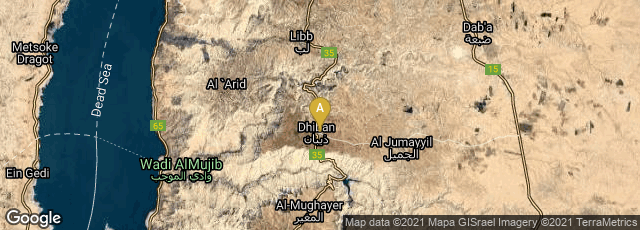In 1868 Anglican missionary
Frederick Augustus Klein discovered the
Mesha Stele or Moabite Stone in
Dibon (now Dhiban), Jordan. It was the first "
Canaanite inscription found in the
region of Palestine,
and the longest
Iron Age inscription ever found in the region, constitutes the major evidence for the
Moabite language, and is a "corner-stone of Semitic epigraphy", and history.
[7] The stele, whose story parallels, with some differences, an episode in the Bible's
Books of Kings (
2 Kings 3:4–8), provides invaluable information on the Moabite language and the political relationship between Moab and Israel at one moment in the 9th century BCE. It is the most extensive inscription ever recovered that refers to the
kingdom of Israel (the "
House of Omri"); it bears the earliest certain extrabiblical reference to the Israelite god
Yahweh.
André Lemaire reconstructed a portion of line 31 to read "House of
David" which would mean it might contain the earliest extra-Biblical witness to David.
[3] Lemaire's reading is contested, with others now reading '
Balak', a Moabite king mentioned at
Numbers 22–24, in its place.
[9][10] It is also one of four known contemporary inscriptions containing the name of Israel, the others being the
Merneptah Stele, the
Tel Dan Stele, and the
Kurkh Monolith.
[12][13] Its authenticity has been disputed over the years, and some
biblical minimalists suggest the text was not historical, but a biblical allegory, but the stele is regarded as genuine and historical by the vast majority of
biblical archaeologists today. (Wikipedia article on Meshah Stele, accessed 9-2020).
The inscribed stone was set in place around 840 BCE by King
Mesha of
Moab (a kingdom located in what is now
Jordan). In the inscription Mesha told how
Chemosh, the god of Moab, had been angry with his people and had allowed them to be subjugated to Israel, but at length, Chemosh returned and assisted Mesha to throw off the yoke of Israel and restore the lands of Moab. Mesha describes his many building projects. Some say the stele was written in the
Phoenician alphabet, but others say it is written in the
Old Hebrew script, which is closely related. The stele is preserved in the Louvre.
When Klein discovered the Mesha Stele amateur explorers and archaeologists were scouring the Levant for evidence proving the Bible's historicity. News of the finding set off a race between France, Britain, and Germany to acquire the stone. A "
squeeze" (a
papier-mâché impression) had been obtained by a local Arab on behalf of
Charles Simon Clermont-Ganneau, an archaeologist based in the French consulate in Jerusalem. The next year, the stele was smashed into several fragments by the
Bani Hamida tribe in an act of defiance against the Ottoman authorities who had pressured the Bedouins to hand over the stele so that it could be given to Germany. Clermont-Ganneau later managed to acquire most of the fragments and piece together 613 of the original letters of about a thousand letters original cut into the stone, thanks to the impression made before the stele's destruction.
Various translations of the Stele were made within a year or two of the discovery. Christian Ginsburg's book,
The Moabite Stone (1871) reproduced the text of the Stele from the "squeeze" and various differing translations by different scholars.

